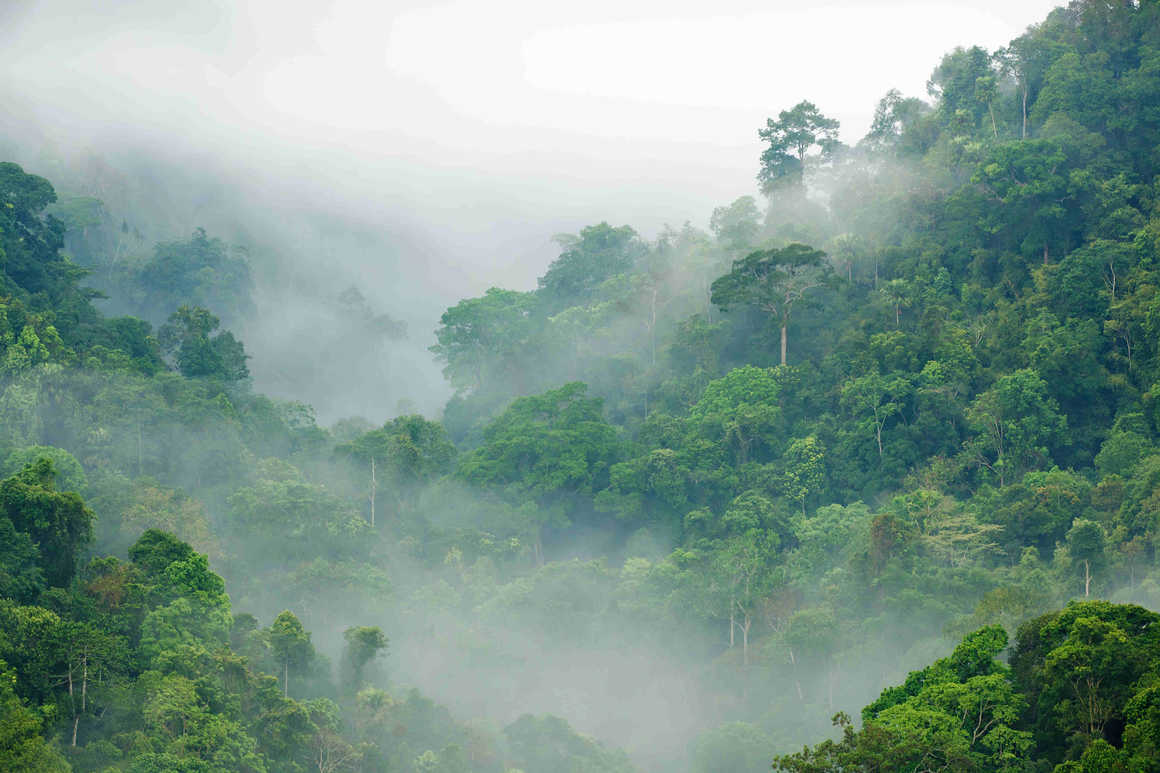Exploring Sustainable Travel
If you’re here, well done you! It means you’re considering the impact travel has on our environment. Greener travel involves examining the decisions you make about which countries you visit, how you get about when you’re there, where you stay, how you behave when you’re visiting, and who you book your travel with. Adventure travel involves getting close to nature, testing your limits, and sometimes experiencing cultures unlike your own. The demand for adventure holidays and alternative travel experiences is growing, but so too is the environmental and cultural footprint we leave behind when we travel.
So the big question is: can adventure travel be sustainable? And what is sustainable tourism? Increasing numbers of us are looking for ways to travel sustainably. In fact, a 2023 survey of over 33,000 travellers found that 76 % of respondents globally planned to travel more sustainably over the following 12 months. This signals a strong shift in consumer behaviour toward eco-conscious travel and more people searching for sustainable holiday options.
Booking eco-friendly travel isn’t always straightforward, but it is possible. With conscious decisions, responsible travel companies, and building your awareness about the greenest way to travel, adventure travel can support rather than strain the planet.

Why Sustainability Matters for Responsible Adventure Travel
Adventure travel often takes you into vulnerable ecosystems - think glaciers, jungles, deserts, or high altitude villages - which can be particularly sensitive to external influence and change. Natural environments are often delicate and easily disrupted, making them unsuitable for high levels of foot traffic, noise, or waste. Even small increases in visitor numbers can lead to erosion, wildlife disturbance, and ecological damage.
Additionally, adventure travel frequently involves long haul flights, overland drives, and gear intensive activities, all of which contribute to carbon emissions. From a cultural perspective, travellers entering remote communities carry the risk of unintentionally disrupting local traditions, lifestyles, or values.
With these facts in mind, sustainability isn't just an ethical choice, and environmentally friendly travel isn’t just a trend; they are a necessity to ensure that the wild places we love, the places that keep our planet healthy, remain intact and thriving for future generations.

Can International Adventure Travel Ever Be Truly Sustainable?
For many, this is at the heart of the debate, and one of the most challenging dilemmas for those who care deeply about sustainability but still want to explore beyond their home nation’s borders. Long distance travel inherently involves emissions, but sustainability is more nuanced than simply staying domestically.
When it comes to any kind of travel, what matters is how we minimise harm and maximise positive impact. To reduce the environmental impact of international travel, that might mean adopting the following adjustments.
Taking fewer, longer trips instead of frequent short holidays
This reduces your overall carbon footprint and allows for deeper, more meaningful engagement with the places you visit, which may also influence future decisions and behaviour.
Combining remote adventures with learning opportunities or cultural exchanges
Take the opportunity to learn from local communities by attending cultural workshops or taking part in environmental education. Understanding your destination in more depth helps you feel more connected to why you’re making eco conscious travel decisions.
Supporting communities and conservation efforts along the way
Choosing sustainable tours, accommodations, and experiences that directly benefit local economies and fund conservation work helps ensure your travel money contributes positively to local people and the planet. Look for sustainable tour operators that promote adventure eco tourism.
Sustainable international travel isn’t about perfection
Aiming for green travel perfection is a big burden to carry and is the job of many, not few. Think instead of it being about making conscious, responsible choices that set an example and create more demand, helping tip the balance away from big, profiteering corporations.

What to Look for in a Sustainable Travel Company
Since you can’t travel the world without using some sort of booking operator, choosing a responsible travel company is one of the most impactful decisions you can make. Here are some tips on what to look for:
- Carbon offsetting programs - sustainable travel companies calculate the emissions their trips produce and invest in climate-positive projects to counterbalance them. They will also talk about this transparently.
- Certifications - seek out companies certified by groups like Travelife, Green Globe, or B Corporation, which indicate high environmental and social standards.
- Local focus - are local guides leading the trip? Is the accommodation locally owned? Supporting the community directly ensures tourism benefits go where they’re most needed.
- Group size - smaller groups mean a smaller environmental footprint and less strain on destinations.
- Transparency - sustainable travel companies worth their salt will clearly communicate their sustainability commitments and progress, not just greenwash with their marketing.

How Adventure Travel Companies are Offsetting Their Carbon Footprint
While no sustainable travel agency can completely eliminate its environmental impact, especially when trips involve flights or overland transport, there are meaningful ways to reduce and balance out the damage. Let’s take a look at some of the actions responsible travel companies are taking to achieve carbon neutral holidays.
Carbon Offset Projects
One of the most direct ways companies are addressing their carbon footprint is by investing in verified carbon offset projects. These initiatives, like reforestation, renewable energy, or methane capture, help absorb or prevent emissions elsewhere in the world. But it’s not enough to just tick the offsetting box - reputable companies go a step further, choosing high-quality, independently verified projects through platforms like Gold Standard or Verra to assure customers that their contributions actually make a difference.
Considered Transport
Transport is a major emissions culprit, especially in adventure travel. That’s why some sustainable tour operators are shifting toward greener transport options where possible. This might mean using electric vehicles for transfers, sailing instead of flying between islands, or designing more cycling and trekking based itineraries. Not only do these approaches cut emissions, but they also tend to create more immersive, slower experiences that appeal to customers invested in eco travel.
Education
Many people are genuinely interested in eco-friendly travelling and want to reduce their impact, but don’t know how. Adventure travel companies that take time to educate guests on everything from waste reduction to the carbon cost of flights can inspire longer-term change.
Nonprofit Collaboration
Finally, the most forward-thinking adventure companies are collaborating with environmental nonprofits and local conservation groups. These partnerships not only give back to the destinations they operate in but also provide guests with the opportunity to learn from and support grassroots efforts directly.
In the end, offsetting isn’t about cancelling out guilt, it’s about taking responsibility and continuously working to create something better for the health of humans, animals and the environment. When companies lead with intention and integrity, they help set a new standard for what responsible adventure travel can look like.

Sustainable Travel Tips for Eco Travelling
Even the most sustainable tour needs conscious participants. You may be wondering what you can do as an individual to make better choices. To help, we’ve put together some simple yet powerful ways to reduce your own environmental impact.
- Choose low emission transport, which means trains and buses over flights, when possible. If you do fly, opt for non-stop routes and economy class (more people per plane means fewer emissions per passenger).
- Pack light, as every kilo matters on a flight. Bring a reusable water bottle, filter tablets, eco toiletries, and a cloth toiletries bag.
- Respect wildlife and nature by sticking to trails, keeping a distance from animals, birds and insects, and following local conservation guidelines.
- Support the local economy of your destination by eating local food, staying in family-run lodges, and buying handmade crafts directly from artisans.
- Even if your tour operator doesn’t offer carbon offsetting, you can use tools like Gold Standard or myclimate to calculate and compensate for your footprint.
- Contribute to eco tourism and conservation in the places you visit. Find organisations that offer immersive voluntary experiences and are part of government initiatives. Be vigilant to avoid programs that exploit communities or offer unskilled aid.
- If you don’t have the time or the ability to contribute physically, donate to local NGOs or conservation projects connected to the area you’re visiting.
- Share what you learn with others - social media and the simple act of word of mouth can raise awareness and shift travel habits, like a butterfly effect.

Sustainable Tourism - Which Countries to Visit
Some countries have placed sustainability at the heart of their tourism policies. Consider travelling to destinations that prioritise environmental and cultural stewardship. We’ve gathered some of our favourites below, but there are more to choose from; just do your research.
Bhutan
Famed for its “Gross National Happiness” philosophy, Bhutan takes a unique approach to tourism, prioritising cultural preservation, environmental protection, and low visitor impact. The country is carbon negative and enforces a “high value, low impact” policy by requiring tourists to pay a daily sustainable development fee, which supports free education, healthcare, and infrastructure.
Guyana
Often overlooked, this small South American nation is a lesser known beauty in sustainable tourism. With 87% forest cover and a commitment to low carbon development, Guyana promotes community led eco lodges and indigenous owned tourism in its pristine rainforests and savannahs. Visitors directly support conservation and local livelihoods by choosing these immersive, responsible experiences.
Norway
A leader in renewable energy and environmental stewardship, Norway emphasises sustainability across its tourism sector. From electric ferries on its fjords to strict regulations in national parks, the country is working to balance adventure tourism with ecosystem protection. Its “Sustainable Destination” certification programme helps travellers identify responsible places to visit.
Indonesia
We love Indonesia’s amazing biodiversity and complex ecosystems. What’s more, Indonesia is investing in eco tourism to preserve its natural heritage. From Komodo National Park’s visitor limits to community based tourism in Bali’s rural areas, the country is taking steps to protect its coral reefs, forests, and wildlife while spreading tourism benefits to local populations.

Kandoo Adventures - Travelling Better, Not Less
Kandoo Adventures builds carbon costs directly into the price of our trips, rather than offering offsets as an optional add on. This makes carbon conscious travel the default when you book with us, not the exception. We also think it reflects the true cost of travel more honestly, which we believe increasing numbers of travellers appreciate. If you’ve been looking for eco-friendly travel companies to make your next adventure a more sustainable one, then stop the search. All Kandoo trips are fully carbon offset, so you can trust that when you’re exploring, you're looking after the planet too.










